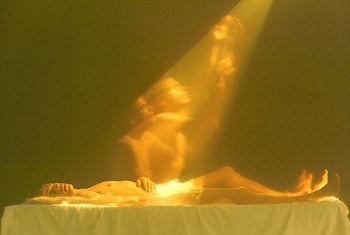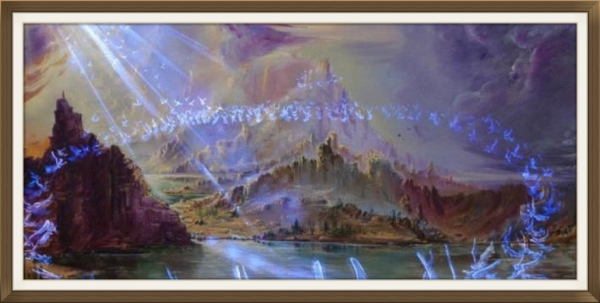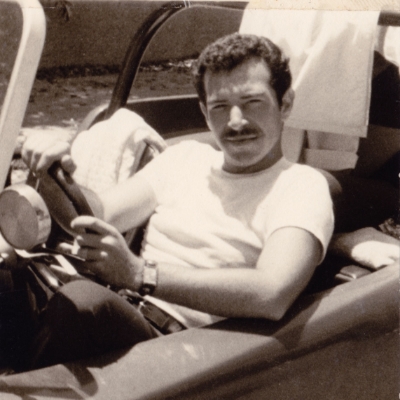Raymond Moody:
The Near Death Experience
&
The Shared Death Experience
For Beyond 50's "Spirituality" talks, listen to an interview with Dr. Raymond Moody. He is the bestselling author of "Life After Life" and leading authority on the near-death experience and coined the phrase in the late 1970s. His research began in the 1960s and "The New York Times" calls him the "father of the near-death experience." He works with professionals (like the clergy and doctors) on grief recovery and dying. Moody is also a philosophic counselor, offering private consultations. He'll talk about his findings from working with many clients about their near death experience and shared death experience. Co-hosting the interview with Moody is Daniel Davis and Sonja Grace.
Nine Elements of the Near-Death Experiences:
1. A Strange Sound: A buzzing, or ringing noise, while having a sense of being dead.
2. Peace and Painlessness: While people are dying, they may be in intense pain, but as soon as they leave the body the pain vanishes and they experience peace.
3. Out-of-Body Experience: The dying often have the sensation of rising up and floating above their own body while it is surrounded by a medical team, and watching it down below, while feeling comfortable. They experience the feeling of being in a spiritual body that appears to be a sort of living energy field.
4. The Tunnel Experience: The next experience is that of being drawn into darkness through a tunnel, at an extremely high speed, until reaching a realm of radiant golden-white light. Also, although they sometimes report feeling scared, they do not sense that they were on the way to hell or that they fell into it.
5. Rising Rapidly into the Heavens: Instead of a tunnel, some people report rising suddenly into the heavens and seeing the Earth and the celestial sphere as they would be seen by astronauts in space.
6. People of Light: Once on the other side of the tunnel, or after they have risen into the heavens, the dying meet people who glow with an inner light. Often they find that friends and relatives who have already died are there to greet them.
7. The Being of Light: After meeting the people of light, the dying often meet a powerful spiritual being whom some have identified as God, Jesus, or some religious figure.
8. The Life Review: The Being of Light presents the dying with a panoramic review of everything they have ever done. That is, they relive every act they have ever done to other people and come away feeling that love is the most important thing in life.
9. Reluctance to Return: The Being of Light sometimes tells the dying that they must return to life. Other times, they are given a choice of staying or returning. In either case, they are reluctant to return. The people who choose to return do so only because of loved ones they do not wish to leave behind.

Since 1973, Moody has studied shared-death experiences from interviewing hundreds of people who experienced this phenomenon as a result of extraordinary circumstances or an altered state of consciousness.
Seven Elements of the Shared-Death Experience:
1. Seeing the Dying Person's Spirit Leave the Body:
Bystanders say they see a roundish entity, often described as a golden-grayish mist, rise from the upper part of the body. In some cases the bystanders describe this as a transparent replica of the person who has died.
2. Accompanying the Dying Person Part-way Toward a Light:
Bystanders say they seemed to leave their own body and rise above it at the time when someone else died. Usually, they report seeing the "spirit" of the person who died. At some point, the bystanders return to their own body and the person who died seems to enter the light.
3. Experiencing a Change in Geometry of the Room:
Bystanders say that when someone else died it seemed that they entered into another realm that did not operate by the rules of three-dimensional geometry. For example, they may say they found themselves out of their bodies and viewing the room from an impossible angle. Sometimes, it seems that the cubical hospital room seems to take on the configuration of a funnel. However, they say that this alternate geometry is impossible to describe in the words of ordinary language.
4. Hearing Beautiful Music:
Bystanders sometimes report that as someone in the room died they heard beautiful music. Again, the music is said to be so beautiful that they find that no words are adequate to describe it.
5. Seeing a Brilliant Light:
Bystanders say that an unearthly light of love and comfort filled the room as someone died. This was not an ordinary physical light they say, but a supernatural light of peace and comfort.
6. Perceiving Spirits Entering the Room:
Bystanders say they see apparitions, apparently of the dying person's deceased loved ones, enter the room around the point of death.
7. Empathically Co-living the Life Review of a Dying Person:
Bystanders view images or scenes of the life of the person who is passing away. Sometimes, this takes the form of a holographic panorama that surrounds the bed of the dying.
Subscribe to Beyond 50's Radio Updates!
Beyond 50 values your personal information. Your email will
not be used, sold, or
shared with any outside party.
Related Interviews:

Invisible Worlds Art

The Afterlife of Billy Fingers

Tenzin Wangyal Rinpoche: Tibetan Dream Yoga
Related Reading:




